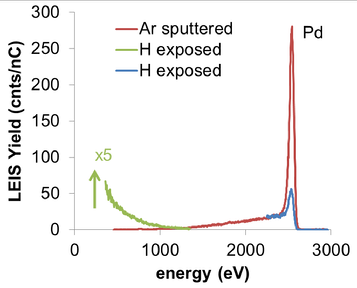assignment
Detecting hydrogen from the sputtered ion signal in low-energy ion scattering
Contact: Dr. Marko Sturm (j.m.sturm@utwente.nl)
Low-energy ion scattering (LEIS) probes the outermost atomic layer of a surface by backscattering of noble gas ions. Under certain conditions, also depth profiles up to 5–10 nm depth can be obtained. LEIS spectra of hydrogen containing samples have a background signal at the low energy side of the spectrum due to hydrogen atoms that are sputtered away and ionised by the noble gas ions used for probing the sample. Time-of-Flight (TOF) measurements can separate the hydrogen ion signal from other sputtered elements and backscattered ions. A previous bachelor student project has shown that the thus obtained hydrogen signal is indeed proportional to the hydrogen content of the sample. In this assignment, the focus will be on a better understanding of the detection depth of hydrogen by LEIS, the possibilities for quantification and the detection of hydrogen in sputter depth profiles.

LEIS spectra of clean and hydrogen exposed Pd. The red and blue line show the signal of backscattered He+ ions for Pd cleaned by Ar ion sputtering and after exposure to H atoms, respectively. The green line shows the signal due to sputtered H ions.
